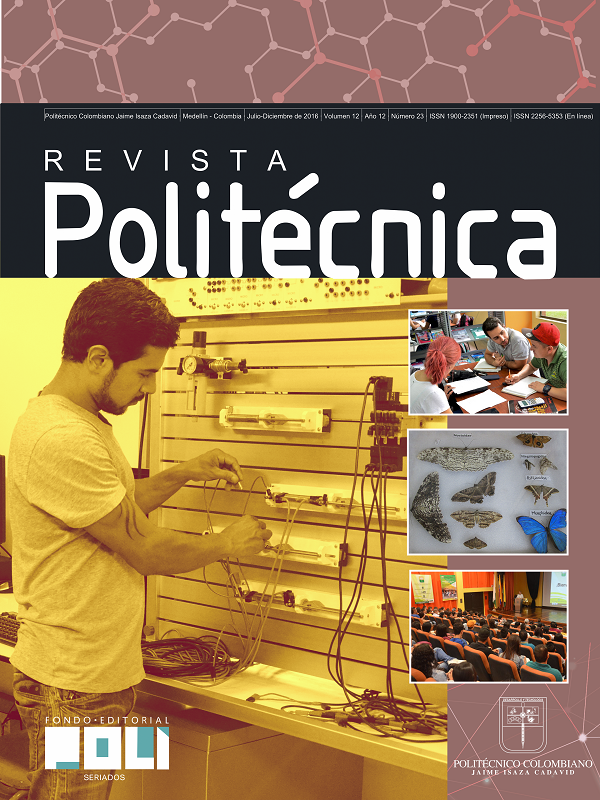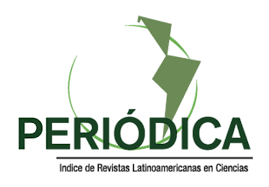Listeria spp and Salmonella spp detection in chesses and it relation with physicochemical characeristics
Keywords:
ELISA, frequency, Foodborne DiseasesAbstract
Listeria and Salmonella bacteria were found in artisanal Costeño and Campesino cheeses sold in the municipality of Barrancabermeja, Santander. Seventy-six samples were taken randomly in four market places in the city, using blocks of cheese (Costeño 25 kg and Campesino 5 lb) as the experimental unit. Physicochemical analyzes of moisture, pH, acidity, aqueous activity (aw) and chlorides were carried out, taking as reference the methods of the Association of Official Analytical Chemists (AOAC) and the Norma Técnica Colombiana (NTC). Also Listeria and Salmonella bacteria were found by using the enzyme-linked immunosorbent assay test (ELISA). The results showed the presence of Salmonella spp in Costeño and Campesino cheeses, with a frequency of 40.79% and 11.43% respectively. However, Listeria spp was not detected in the samples examined and the values obtained in the physicochemical analysis are within the limits established in NTC 750: 2000.
Article Metrics
Abstract: 1814 HTML (Español (España)): 322 PDF (Español (España)): 3959 XML (Español (España)): 36References
Cabezas-Sánchez C. Enfermedades infecciosas emergentes-reemergentes y sus determinantes. Editorial policy on the ethics of human research. 2015 01//.
Riverón C. R. L. Enfermedades emergentes y reemergentes: un reto al siglo XXI. Revista Cubana de Pediatría. 2002;74(1):7.
Suárez L. C. L. y Berdasquera Corcho D. Enfermedades Emergentes y Reemergentes: Factores Causales y Vigilancia. Revista Cubana de Medicina General Integral. 2000;16(6):593.
CEPAL., FAO., IICA. Perspectivas de la agricultura y del desarrollo rural en las Américas: una mirada hacia América Latina y el Caribe: 2014. CEPAL F, IICA, editor: FAO; 2013. 209 p.
Fajardo IG. Alimentos seguros: Ediciones Díaz de Santos; 2008.
Colak H., Hampikyan H., Bingol E.B. y Ulusoy B. Prevalence of L. monocytogenes and Salmonella spp. in Tulum cheese. Food Control. 2007;18(5):576-9.
David C. A. Estudio de cohortes de enfermedades emergentes y reemergentes en Barrancabermeja entre los años 1980- 2010. 2015. 2015;6(10):14.
Kousta M., Mataragas M., Skandamis P. y Drosinos E.H. Prevalence and sources of cheese contamination with pathogens at farm and processing levels. Food Control. 2010;21(6):805-15.
Michanie S., Medina L., Ghiberto D., Prosello W., Alia P., Coria P, et al. Epidemiología de las enfermedades transmitidas por quesos. Énfasis Alimentacion. 2001;7.
Méndez I.A., Badillo C.A., Parra G.O. y Faccini Á.A. Caracterización microbiológica de Salmonella en alimentos de venta callejera en un sector universitario de Bogotá, Colombia. Julio a octubre de 2010. Microbiological characterization of Salmonella in Street-vended foods an university sector in Bogotá, Colombia July-October 2010. 2011;24(1):23-9.
Hur J., Jawale C. y Lee J.H. Antimicrobial resistance of Salmonella isolated from food animals: A review. Food Research International. 2012;45(2):819-30.
Albarracín Y., Piñales R.P. y Carrascal A. Listeria spp., y L. monocytogenes en leche cruda de cabra. Revista MVZ Córdoba. 2008;13(2):1326-32.
Sorin M-L., Faure S., Poumerol S. y Arbault P. Listeria monocytogenes detection in food using an ELISA-based method. In: IAFP, editor. Presented during the 87th annual meeting of the International Association for Food Protection (IAFP); 6-9 of August 2000; Atlanta, USA, 6-9 of August 20002000. p. 14.
Romero-Castillo P.A., Leyva-Ruelas G., Cruz-Castillo J.G. y Santos-Moreno A. Evaluación de la calidad sanitaria de quesos crema tropical mexicano de la región de Tonalá, Chiapas. Revista mexicana de ingeniería química. 2009;8:111-9.
Durango J., Arrieta G. y Mattar S. Presencia de Salmonella spp. En un área del Caribe colombiano: un riesgo para la salud pública. Biomédica. 2004;24:89-96.
Yoon Y., Lee S. y Choi K-H. Microbial benefits and risks of raw milk cheese. Food Control. 2016;63:201-15.
Carrasco E., Morales-Rueda A. y García-Gimeno R.M. Cross-contamination and recontamination by Salmonella in foods: A review. Food Research International. 2012;45(2):545-56.
ICONTEC. Norma Técnica Colombiana - NTC 750. Productos lácteos, queso. ICONTEC; 2000. p. 17.
Fennema O.R. Food chemistry. Food Science and Technology-Marcel Dekker, Inc Taylor & Francis. 1996.
Cheftel J.C. y Cheftel H. Introducción a la Bioquímica y Tecnología de los Alimentos. Zaragoza. España.: Acribia; 1980.
Floros J.D. y Liang H. Acoustically assisted diffusion through membranes and biomaterials. Food Technology. 1994;48(12):79-84.
Dos Santos Eduardo A.J., Mora Ventura M.T. y Quinto Fernández E.J. Estudio del comportamiento cinético de microorganismos de interés de seguridad alimentaria con modelos matemáticos: Tesis doctoral. http://www.tdx.cat/handle/10803/5691. Ultimo acceso 19 junio de; 2013.
Creţu C., Floriştean V., Carp-Cărare M., Brădăţan G. y Işan E. The influence of pH and temperature on Salmonella spp. from fresh, chilled and frozen poultry carcasses. Cercetări Agronomice în Moldova. 2009;XLII(2):79-84.
CO MINSALUD. Ministerio de Salud y Protección Social. Identificación de riesgos biológicos asociados al consumo de leche cruda bovina en Colombia. editor.: Ministerio de Salud y Protección Social.; 2011. p. 67.
Gallegos J., Arrieta G., Máttar S., Poutou R., Trespalacios A. y Carrascal A. Frecuencia de Listeria spp., en quesos colombianos costeños. Revista MVZ Córdoba. 2007;12:996-1012.


 _
_


















